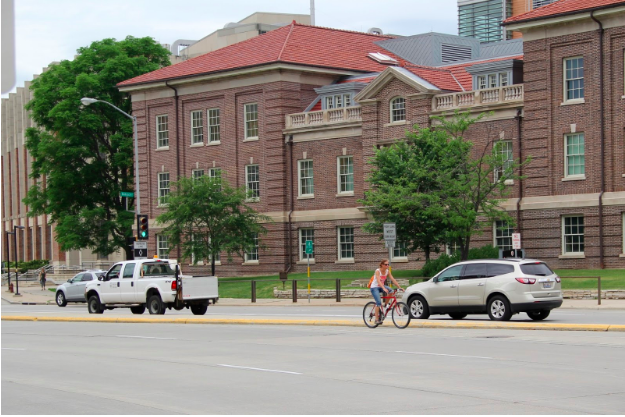






 (Maija Inveiss/Madison Commons)
(Maija Inveiss/Madison Commons)
The Sustainable Madison Transportation Master Plan Oversight Committee held its first public open house to introduce Madison in Motion Tuesday night.
Madison in Motion is the City of Madison’s sustainable transportation master plan which will be used to guide transportation decisions in the future. Members of the public were invited to submit written feedback and highlight possible issues they had with the draft.
Some of the major themes for recommendations included bus rapid transit (BRT), bicycle route implementation, new street designs that would incorporate all forms of transportation and preparing for emerging transportation technologies.
Mayor Paul Soglin said the city is getting a greater concentration of people which makes transportation systems more efficient and that there is increased reliance on public transportation.
“Ridership is up 40 percent in the last eight years because we make more efficient use of our bicycle ways, our trails, our lanes,” Soglin said.
One of the main parts of the plan is the implementation of BRT. According to the Institute for Transportation and Development Policy, BRT is a bus-based transit system that travels through dedicated lanes.
David Trowbridge, the project manager for Madison in Motion, said the committee thinks BRT will be a very cost-effective and very useful in the process of moving people around an urban environment like Madison. It would not, however, replace existing local bus services.
Soglin said one-third of the employees in Madison is Madisonians, but the other two-thirds are commuting to the city from the rest of Dane County and surrounding counties.
He said the city is going to need to look at more creative alternatives to transportation especially during the process of advancing BRT.
“We won’t be able to avoid these debates and these challenges as we try to become a more transit-friendly and more bicycle-friendly community,” Soglin said.
Paul Moore, a principal professional engineer for the consulting firm behind the master plan, said the plan is designed to help create a walkable, bikeable, transit-oriented city.
Madison has steadily made progress toward this goal. According to Moore, the work by the metro bus system and other larger entities like the University of Wisconsin-Madison has increased bus ridership in Madison since 2000.
Trowbridge said originally they wanted the plan to be adopted by the end of the year, but he thinks they will be refining it more before moving forward. The committee also plans on getting more community input on the draft of Madison in Motion.
|
|
|
Welcome to the Madison Commons, a website designed to provide news and information about all of Madison's neighborhoods and a crossroads for the discussion of community issues. The name comes from the idea of a village commons, a place for news, talk, debate, and some entertainment, too, that's open to everyone.
All rights reserved. Read more about the Madison Commons and its partners.

